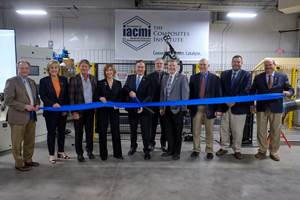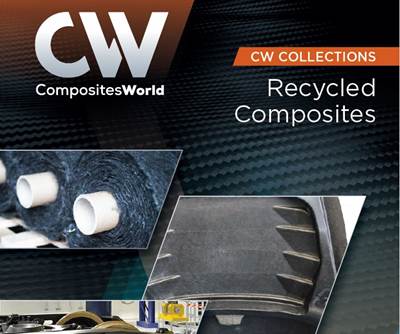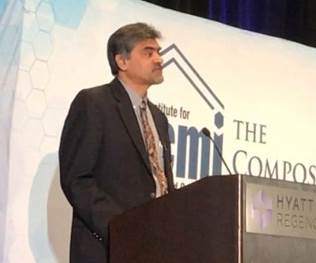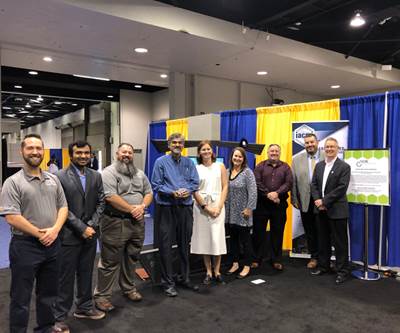Enabling a circular economy approach to advanced composites innovation, manufacturing and use, Part 2
IACMI chief technology officer Uday Vaidya reflects on IACMI’s role in improving composites’ recyclability and reusability.
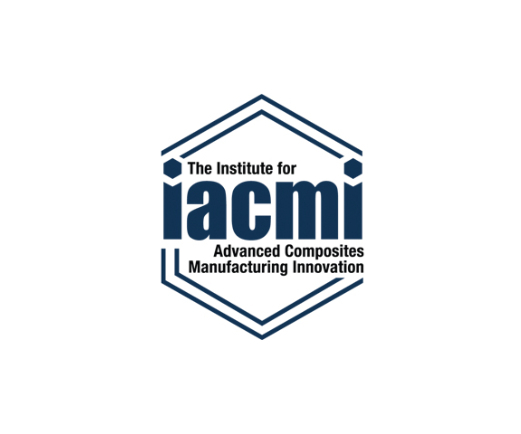
Over the past five years of its existence, the Institute for Advanced Composites Manufacturing Innovation (IACMI — The Composites Institute; Knoxville, Tenn., U.S.) has established a vast network of partners whose expertise and shared resources have improved the United States’ energy and economy security through the development and commercialization of lower-cost, energy-efficient composites manufacturing technologies. IACMI continues to use its member-developed technology roadmap to catalyze collaborative, pre-competitive activities to make significant progress toward its third overarching technical goal: reducing waste and pollution of fiber-reinforced polymer composites (FRPCs) throughout their entire product lifecycle.
Through technical projects and guiding priorities, the Institute is helping to address key challenges in circular economy adoption through technology and process developments. In last month’s column, we highlighted the industry-led projects that are enabling IACMI to make significant progress toward reducing the impact of landfill contributors in various markets through reducing the embodied energy of FRPCs. This month’s column focuses on another key aspect that increases lifecycle advantages in composite applications: improving composites’ recyclability and reusability.
Improving the recyclability of carbon fiber-reinforced plastics (CFRP) is essential for economic benefits and builds on converging trends that are driving interest in improved FRPC recyclability. These trends include:
- The European Union’s end-of-life (EOL) vehicle directive requirement that 85% (by weight) of materials used in passenger vehicles be reusable or recyclable.
- The high performance but high manufacturing cost of carbon fiber creates an increased market demand for recycled fiber products, particularly in the automotive market.
- The newest generation of consumers is highly focused on environmental awareness.
The recovery of materials with high embodied energy, such as carbon fiber, presents a particularly compelling pathway to save energy and cost while reducing impact to the environment since recycling avoids energy consumption associated with the production of new materials. IACMI estimates that recovering carbon fiber takes less than 15% of the energy used to make the original fiber.
IACMI is initiating projects that support composite recycling, reduction, repurposing and reuse.
The composites industry has sought to achieve reliable processes for recycling both process scrap and end-of-life composites, which are often perceived as inferior to competing materials in terms of cradle-to-cradle sustainability because they are difficult to recycle or reuse. Up to 30% of materials used to produce FRPCs becomes scrap or landfill waste1. And, as reported by CompositesWorld, informal statistics indicate that only approximately 2% of composites-related companies are active recyclers2.
To improve the recyclability and reusability of FRPCs into useful products, IACMI has focused on a strategy with the following objectives:
- Demonstrate fiber-matrix separation technologies to recycle and recover waste from CFRP production scrap and end-of-life components.
- Deploy new processes and material forms to produce structural composites with predicted, controlled fiber orientation.
- Foster connections among scientists, recyclers, end users, regulators and policymakers to improve the composite recycling infrastructures.
The following industry-led projects demonstrate how IACMI and its partners are working collaboratively to achieve that strategy:
Evaluating the lifecycle energy use and environmental impacts of end-of-life recovery processes on composite scrap materials
The American Composites Manufacturers Association (ACMA) and project partners, Oak Ridge National Laboratory (ORNL), Continental Structural Plastics (CSP), CHZ Technologies, and A. Schulman are developing a scalable low-heat pyrolysis method to recover all liquids, tars, and oils from end-of-life (EOL) composite materials and convert them into clean synthetic gases while recovering valuable glass and carbon fiber materials. The project, which included a lifecycle assessment of five different EOL processes, demonstrates the energy and fiber recovery advantages of controlled pyrolysis and its dual benefit of improving the sustainability of composite materials while reducing the amount of scrap and EOL composites sent to landfill. The capacity to efficiently process multi-source scrap makes it economically viable to recover even low-value materials (glass fiber) when that includes higher value material (carbon fiber).
Fostering processes that convert reclaimed CF/CFRP into downcycle material applications
GreenTex; Wabash National; ORNL; and the University of Tennessee, Knoxville (UTK) have developed a patent-pending approach to recycling high-performance fibers of any type of composite waste, in any form. The method uses crushed/chopped fibers and cured composites to make panels for use in shipping containers, marine, infrastructure and construction applications including flooring, wall panels, countertops and more.
Demonstrating a recycled CF (rCF) form to fabricate sheet molding compound
ORNL, UTK, AOC, INEOS Composites, ELG Carbon Fibre, Huntsman, IDI Composites, Michelman, Montefibre, Vartega and Volkswagen are developing equipment and processes for compounding and molding carbon fiber sheet molding compound (CF-SMC) reinforced by rCF and/or textile carbon fibers. ORNL’s method is estimated to reduce cost by 50% and embodied energy by more than 60% compared to currently available CF-SMC.
Coordinating automotive OEM to demonstrate prototypical production of automotive components using recycled materials
Vartega, Ford, Michelman, Colorado School of Mines, Plasan, BASF, the University of Dayton Research Institute, ORNL, and UTK have demonstrated a closed loop project using Vartega’s chemistry-based recycling process to create low-cost recycled carbon fiber from uncured automotive carbon fiber prepreg manufacturing scrap. This collaboration structure supports the path to a circular economy construct by connecting project partners throughout the supply chain to design, from the onset, materials that are created for multiple uses. The recycled material is suitable for high throughput processes such as injection molding, extrusion and additive manufacturing. The project’s goal is to repurpose the discontinuous form of recycled material for automotive applications. Vartega reports that its recycling process uses 95% less energy at half the cost of virgin carbon fiber3. The National Science Foundation SBIR Program, which provides support to small businesses to develop technologies with strong potential for commercial success and broad societal impact, awarded a grant to Vartega in 2019 to develop CFRP powder materials for use in powder bed fusion additive manufacturing processes4.
By initiating projects that support composite recycling, reduction, repurposing and reuse, IACMI is enabling its members to develop manufacturing standards and best practices that support industry’s bottom line and also benefit the U.S. national security and economic prosperity.
Join Us
IACMI has created an ecosystem of innovation that meets commercial needs, serves national security, and drives national economic growth through its network of more than 150 members including academic institutions, and federal, state, and local governments – supported by the U.S. Department of Energy’s Advanced Manufacturing Office. Its efforts are driven by the major industry participation of its membership and made possible by the network of world-renowned talent that participates in the community. IACMI’s industry-led projects improve the flexibility of composites manufacturing processes, which in turn increases material diversity and allows optimization with improved energy efficiency, recyclability, material resource efficiency and lifecycle characteristics, including EOL disassembly and reuse.
Organizations of any size can join IACMI and, once a part of the consortium, can benefit from participating in projects such as those described above, networking with other members and engaging in workforce development opportunities to meet organizational needs. Learn more at iacmi.org.
Related Content
People in composites: April 2023
Concordia Engineered Fibers, Nawa Technologies, IACMI, Joby Aviation and Akarmak America have made new personnel announcements in April 2023.
Read MoreThe state of recycled carbon fiber
As the need for carbon fiber rises, can recycling fill the gap?
Read MoreIACMI receives funding renewal from U.S. DOE to continue composites R&D
Over the next five years, IACMI aims to further composites R&D efforts to support U.S. decarbonization and its pillars: technology, economy and workforce development.
Read MoreIACMI names Chad Duty as CEO
Duty will fully assume his new role as CEO in April 2023, while continuing his position as an engineering professor at the University of Tennessee, Knoxville.
Read MoreRead Next
Download the Recycled Composites Content Collection
CW’s editors are tracking the latest trends and developments in recycled composites. Sign up now and we'll send you our CompositesWorld Recycled Composites collection straight to your inbox!
Read MoreEnabling a circular economy approach to advanced composites innovation, manufacturing and use, Part 1
In part 1 of a two-month column, IACMI chief technology officer Uday Vaidya reflects on the organization’s efforts to reduce the embodied energy of composites.
Read MoreIACMI: Driving innovation in the advanced composites industry
Since its start in 2015, the Institute for Advanced Composites Manufacturing Innovation (IACMI) has come a long way in its mission of advancing composites innovation. CTO Uday Vaidya reflects on the past five years.
Read More


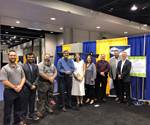














.jpg;maxWidth=300;quality=90)



